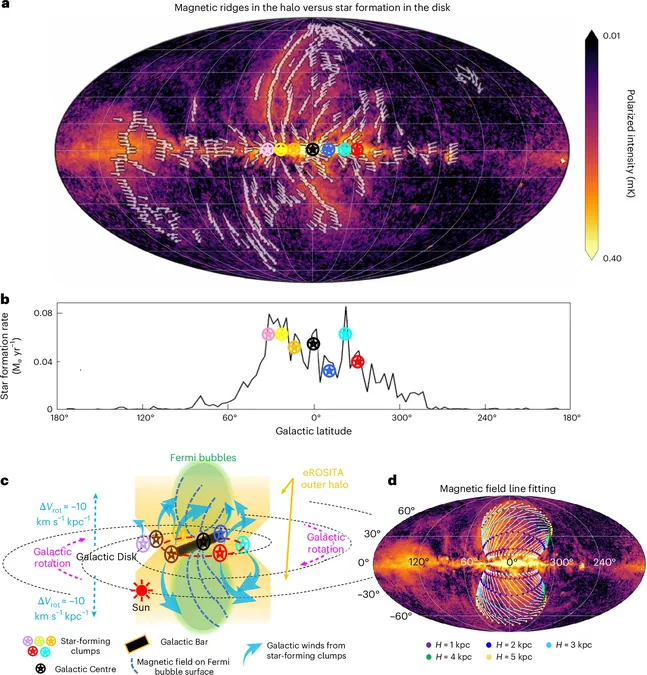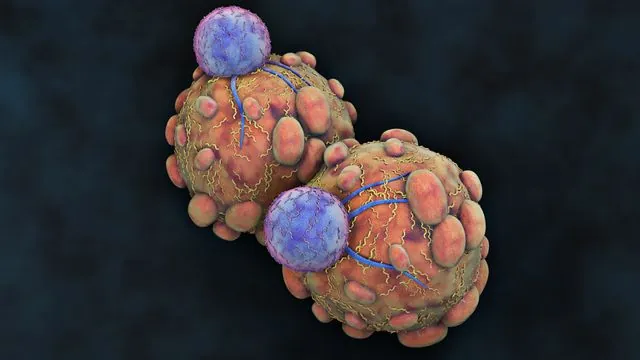
Unveiling the Milky Way’s Magnetic Halo: Astounding Discoveries About Galactic Outflows!
2024-09-23
A groundbreaking study led by the National Institute for Astrophysics (INAF) in collaboration with Radboud University's Marijke Haverkorn has revealed astonishing new insights into the inner workings of our Milky Way galaxy—a magnetized galactic halo that’s reshaping our understanding of galactic structure and evolution.
This thrilling discovery significantly challenges the established models we had for our galaxy. Researchers have detected magnetized structures that stretch an impressive 16,000 light-years or approximately 150 quadrillion kilometers above and below the galactic plane. These structures have been identified as a key origin point for the eROSITA Bubbles—massive bubbles of gas and energy fueled by the explosive deaths of stars during supernovae events.
The eROSITA satellite, an X-ray telescope part of the Russian-German space mission Spectr-Roentgen-Gamma (SRG), has captured these gigantic bubbles, which expand majestically across the night sky from horizon to horizon. Details of these discoveries were published in the esteemed journal Nature Astronomy on September 23.
The researchers discovered that the magnetic fields within these eROSITA Bubbles are highly organized, forming intricate filamentary structures that are massive in scale, stretching about 150 times the apparent size of the full moon. These filaments are associated with hot winds ejected from the galactic disk at staggering temperatures around 3.5 million Kelvin, largely due to vigorous star-forming regions.
He-Shou Zhang, the lead author and a prominent researcher at INAF, expresses the significance of their findings stating, “Our analysis reveals that intense star formation occurring at the end of the galactic bar substantially contributes to these expansive, multiphase outflows.”
Moreover, Zhang emphasizes the groundbreaking nature of this research by stating, “For the first time, we have detailed measurements of the magnetic fields in the Milky Way’s X-ray emitting halo, unveiling new connections between stellar birth activities and galactic outflows. The magnetic ridges we discovered are not mere coincidental phenomena but are intricately linked to the star-forming regions within our galaxy.”
Using a comprehensive survey that combined observations across multiple wavelengths—from radio frequencies to gamma rays—researchers delved into the nature of these magnetic features, identifying their extensive presence and role in galactic feedback processes. This study marks a pivotal point in tracing the link between the Milky Way's star-forming ring—located at the galactic bar—and the generation of vast galactic outflows.
Gabriele Ponti, another key member of the research team, notes the broader implications of these findings: “It’s well known that energetic ‘active’ galaxies can produce outflows driven by black hole activities or starbursts, significantly affecting their host galaxies. Intriguingly, we now observe that our relatively quiet Milky Way is also capable of generating powerful outflows, with the star-forming ring at the end of its galactic bar playing a crucial role.”
These discoveries might enlighten our understanding of similar Milky Way-like galaxies across the universe, offering a window into their growth and evolution.
The comprehensive research was made possible through the analysis of over 10 different all-sky surveys, covering a wide array of frequencies. Zhang concludes, “Our work stands as a critical moment in galactic research. This is the first thorough multi-wavelength study of the eROSITA Bubbles since their initial discovery in 2020, propelling our understanding of the intricate and dynamic star-forming ecosystem of the Milky Way into new realms.”
Could this mean we are on the verge of discovering even more about the mysterious processes that shape our galaxy? The findings reveal that the Milky Way holds deeper secrets waiting to be uncovered!


 Brasil (PT)
Brasil (PT)
 Canada (EN)
Canada (EN)
 Chile (ES)
Chile (ES)
 España (ES)
España (ES)
 France (FR)
France (FR)
 Hong Kong (EN)
Hong Kong (EN)
 Italia (IT)
Italia (IT)
 日本 (JA)
日本 (JA)
 Magyarország (HU)
Magyarország (HU)
 Norge (NO)
Norge (NO)
 Polska (PL)
Polska (PL)
 Schweiz (DE)
Schweiz (DE)
 Singapore (EN)
Singapore (EN)
 Sverige (SV)
Sverige (SV)
 Suomi (FI)
Suomi (FI)
 Türkiye (TR)
Türkiye (TR)